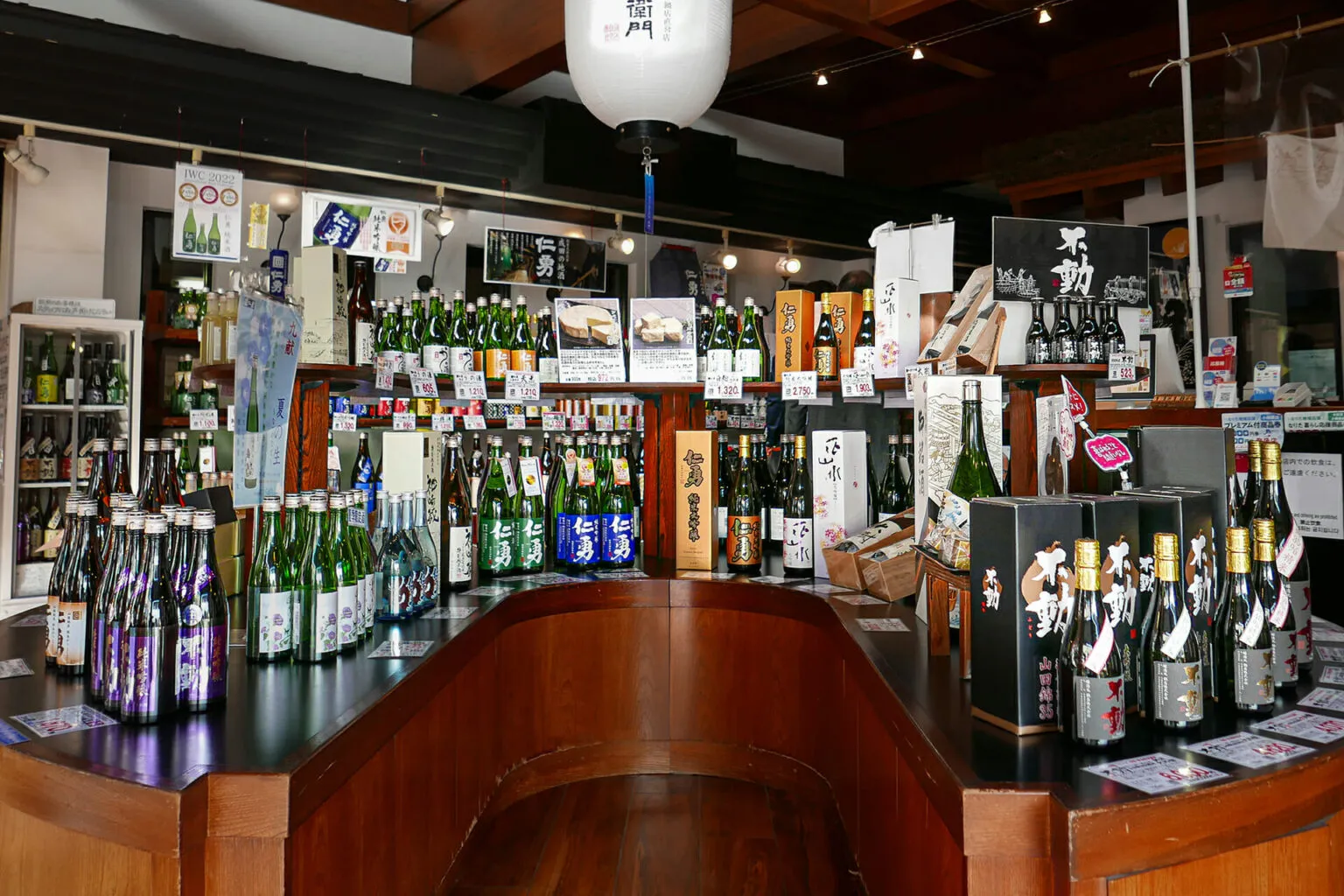
Things to Do | Visit Chiba | Latest update:2025/02/14
Throughout the world you’ll find different foods and drinks that claim a deep cultural significance in the places in which they originated. Japanese sake, or nihonshu, is an alcoholic beverage made from rice that is deeply intertwined with the history and traditions of its home nation. Sake brewing has even been recommended by Japan’s Cultural Affairs Council to be considered as an UNESCO intangible cultural heritage asset. Nadedana brewery in Chiba offers a window into the world of sake culture, whether it’s via a quick stop at their shop near Narita International Airport, or a full tour of their brewery just 30 minutes to the north in the town of Kozaki.
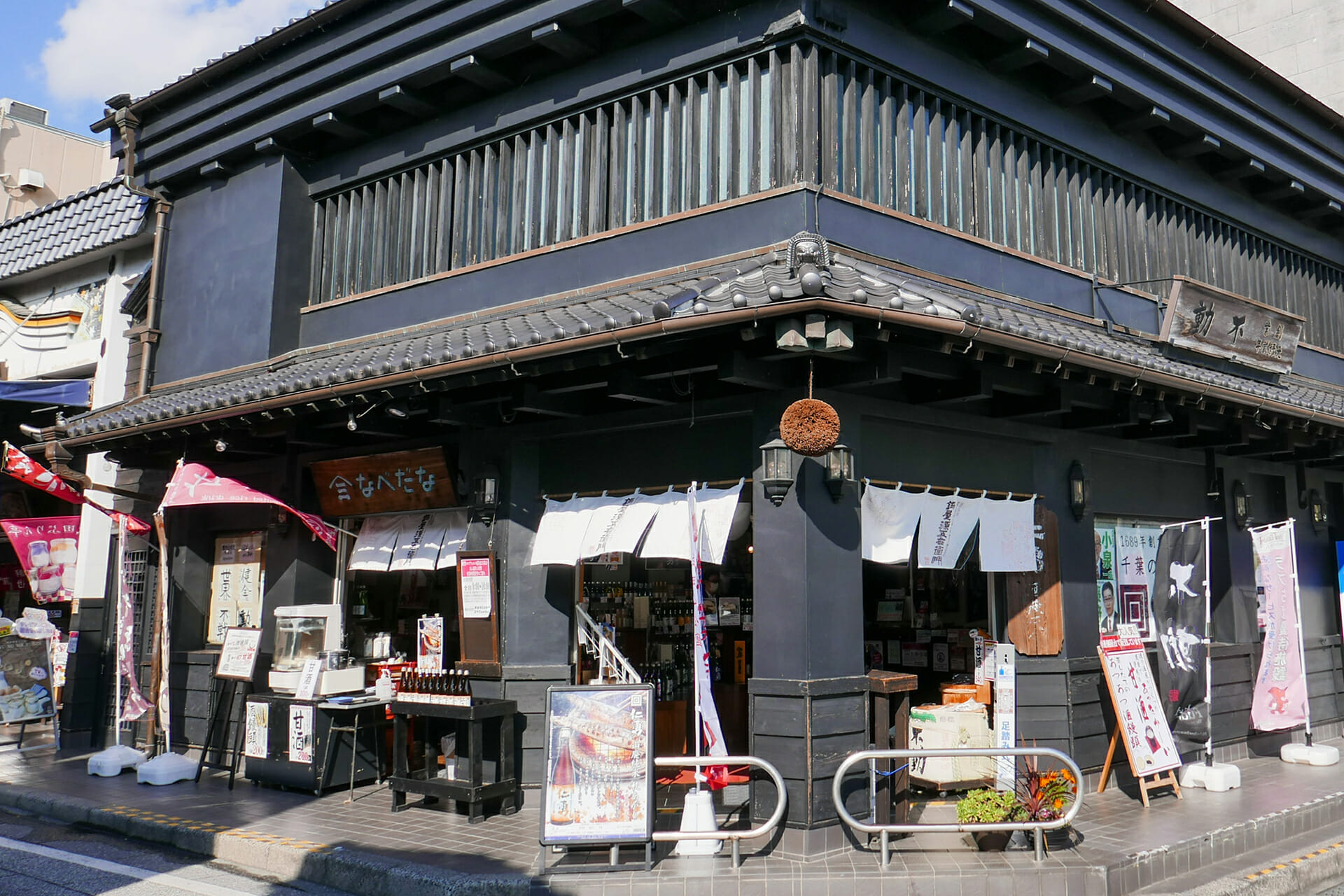 Nabedana store front.
Nabedana store front.
Nabedana started brewing sake over 330 years ago here in Narita, next to Narita-san Shinsho-ji Temple. Today, their shop can still be found on the historic street that leads to the temple, which is just a quick train ride from Narita Airport. Only about 1,500 sake breweries are in operation in Japan, less than half of the number it once was. Of those remaining breweries, it’s locally-based businesses like Nabedana that pride themselves on upholding traditional brewing processes that are based in handcraftsmanship.
The Visit Chiba staff recently took a visit to the Nabedana shop in Narita and then the Kozaki brewery. Follow our journey below:
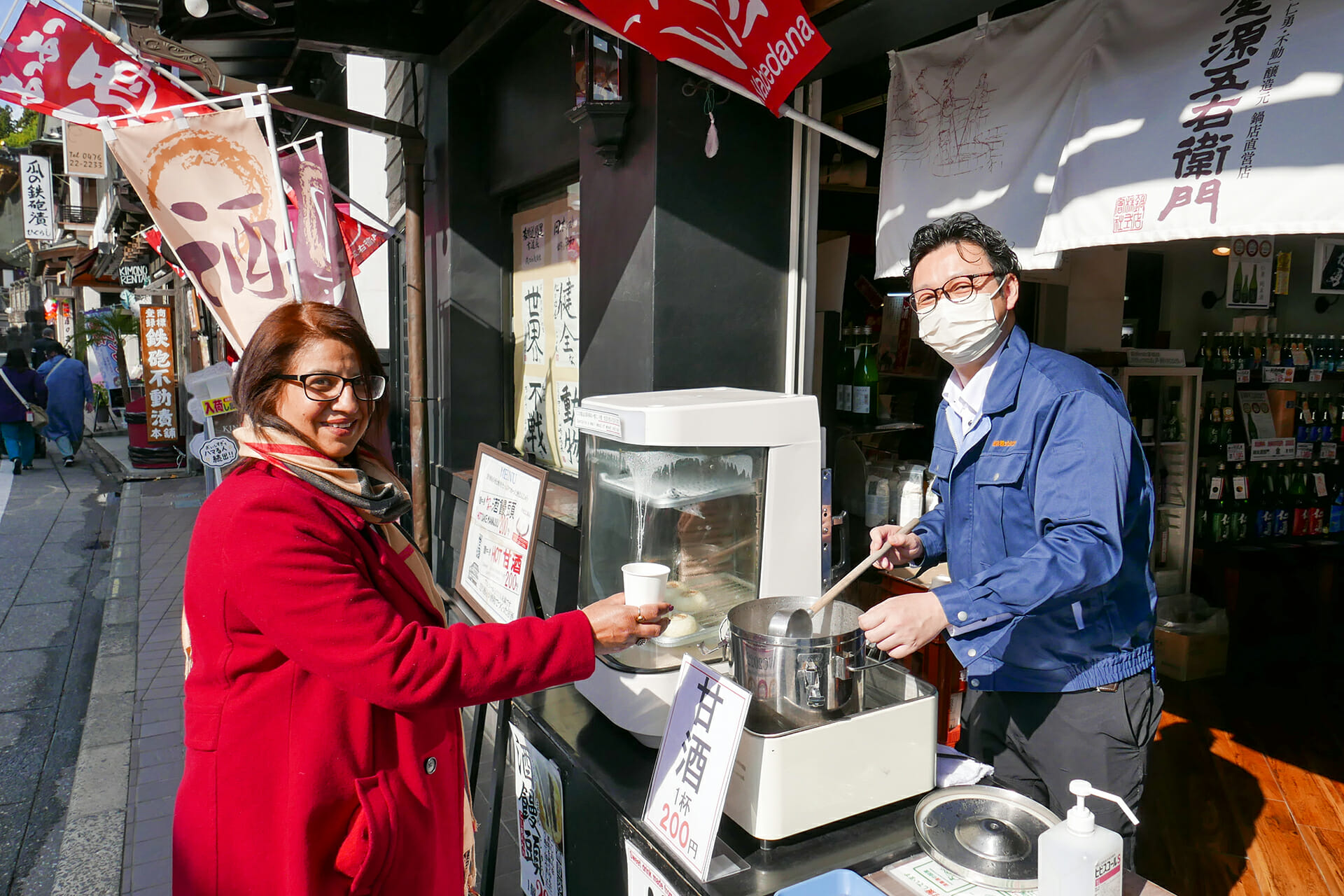 Mr. Moriyama serving up some amazake to a customer.
Mr. Moriyama serving up some amazake to a customer.
When we arrived at Nabedana and met the friendly shop manager Mr. Moriyama, he was serving a 200-yen sample of amazake–a sweet drink made of fermented rice–to a traveler from Australia. Upon greeting us, he took the time to show us around the shop and tell us about the company’s history. All the sake sold here today is brewed at their nearby Kozaki brewery. The business originally started here in Narita as a vendor of pots and kettles; from which the name “Nabedana” comes from, nabe being a word which refers to a typical Japanese cooking pot. In 1689, the company received a license to brew sake here in Narita from the local Sakura Clan, and at one point their operations expanded to four breweries in Japan. Due to supply shortages during World War II, they eventually consolidated to the one brewery in Kozaki, Chiba. We learned later in the day when we visited the Kozaki brewery why that location was chosen, but for now it was time to turn our attention to the sake selection on offer in the shop.
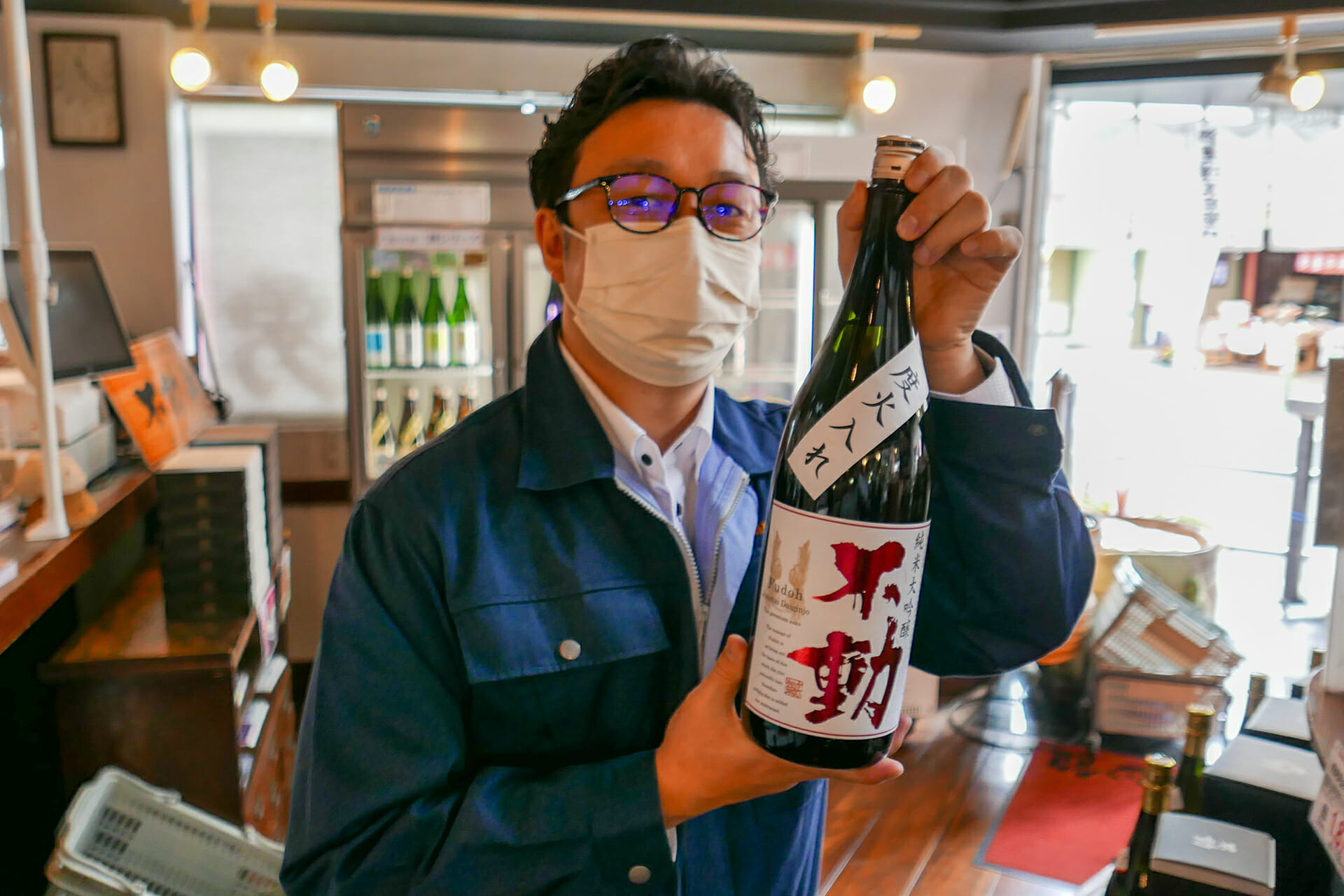 Mr. Moriyama's recommendation, the award-winning Fudoh Junmai Daiginjo.
Mr. Moriyama's recommendation, the award-winning Fudoh Junmai Daiginjo.
Mr. Moriyama’s top recommendation was their Fudoh Junmai Daiginjo (pictured above), one of the varieties from their Fudoh lineup. He explained to us Fudoh is brewed to preserve the taste of the rice, resulting in a stronger flavor, and is only sold at selected liquor stores. He also steered us toward their Jinyu lineup, which he told us was more of a staple sake that you’d also find at supermarkets and department stores. For customers traveling through Narita Airport, there is also the miniature “Dreams of Edo” carton that’s wrapped with a small sake cup, making for an easy-to-carry souvenir from your trip here. If you’re not sure which sake suits your tastes, you can always ask the staff to let you sample these different varieties yourself. As typical per Japanese custom, free sake tasting is meant for customers who intend to make a purchase, so please keep in mind that it should not be considered as a free sampling.
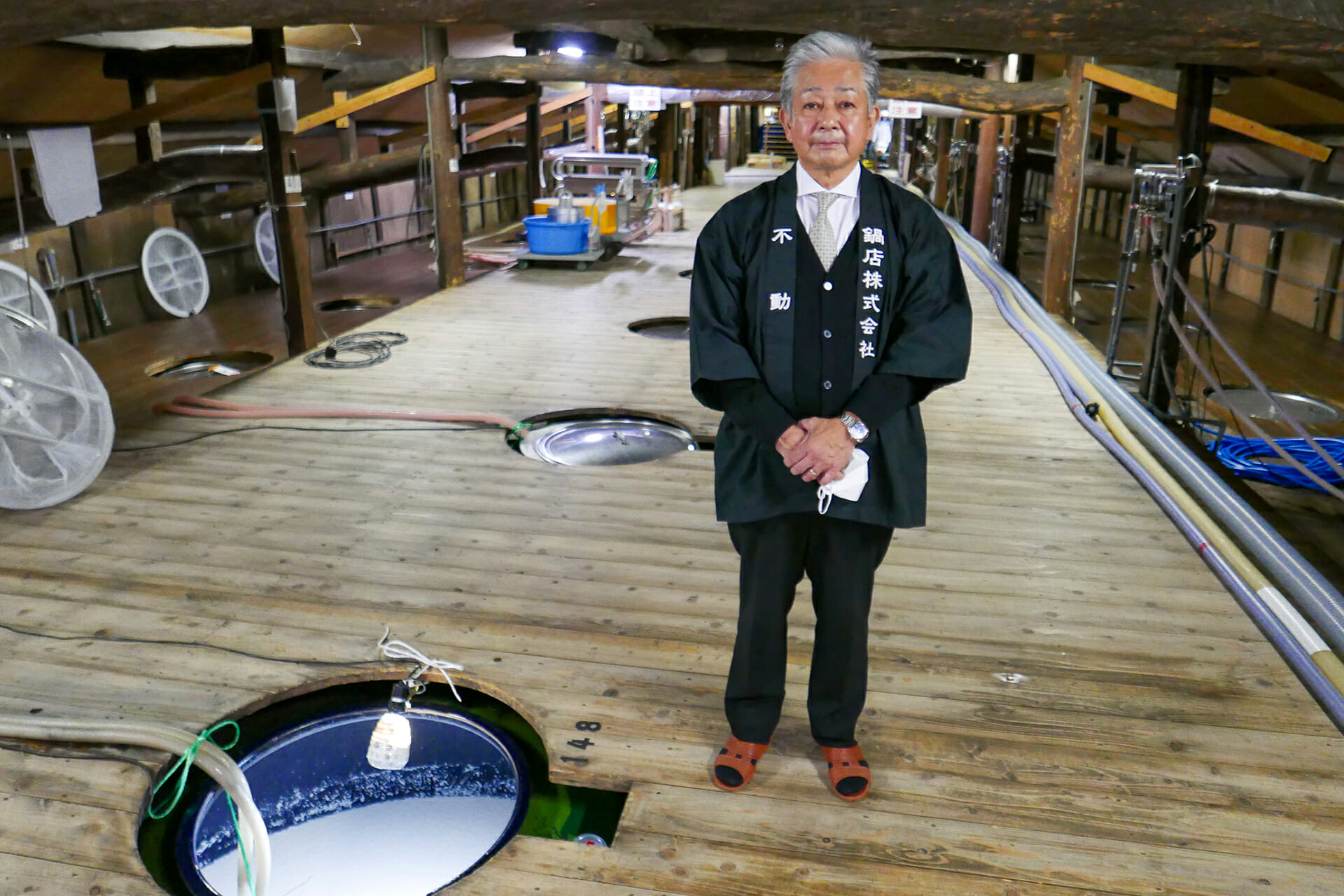 Kan Otsuka, President of Nabedana, standing above sake brewing barrels. This family-run business has been brewing sake for over three centuries, having survived for 19 generations.
Kan Otsuka, President of Nabedana, standing above sake brewing barrels. This family-run business has been brewing sake for over three centuries, having survived for 19 generations.
After our visit to Nabedana’s Narita shop, we took the half-hour drive to their brewery in the town of Kozaki where we were greeted by the company president, Kan Otsuka. Around 20 years ago, Mr. Otsuka assumed the mantle of president, making it 19 generations of continued family ownership. As we learned earlier, the company once had four different branches in Japan, but now all brewing operations are carried out here in Kozaki. The town is located along one of Japan’s major rivers, the Tone River, which gives brewers here access to high-quality water sources and abundant rice supplies. These blessings were a major factor in the original decision to consolidate here, and continue to contribute to their success.
Mr. Otsuka explained that Nabedana maintains a commitment to excellence, especially when it comes to the making of koji, steamed rice that has been treated with koji mold spores. This is an essential step in a process that’s unique to sake brewing and prepares the rice to later be fermented by yeast cells. Although larger brewers often rely on machinery to make koji, Nabedana still crafts it by hand. In fact, our visit to the brewery included a stop at their very own Koji House, where we were even given a chance to taste the koji rice ourselves. Our appreciation for the koji making stage of the brewing process was deepened as we tasted some of the sweet base flavors that are unmistakably distinct to sake.
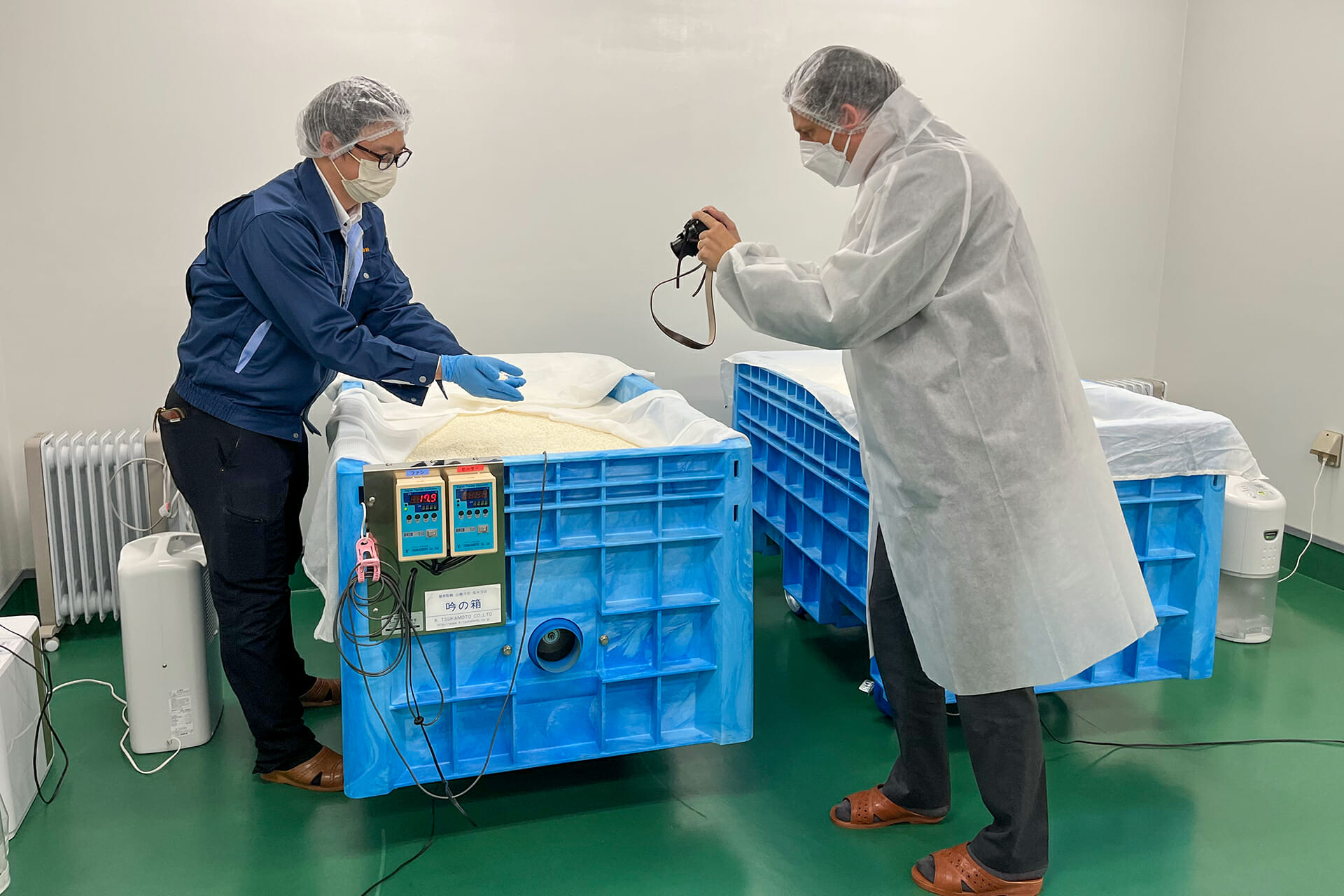 Koji House tour.
Koji House tour.
The process of making koji was central to the recommendation to certify sake brewing as a UNESCO intangible cultural heritage asset. Mr. Otsuka explained, “Koji is the base for many Japanese foods. It’s used to make many of the basic ingredients essential to Japanese cuisine like sake, mirin, miso, and soy sauce.” The town of Kozaki has long held a special connection to koji and sake brewing, especially as it evolved into a riverway hub of commerce during the Edo and Meiji periods and an emphasis was placed on foods and drinks which preserve longer. Accordingly, many of those products began to be made here, a legacy which has influenced the local economy and businesses like Nadedana.
We also got the chance to ask Mr. Otsuka about some of the key elements of his craft. Of course, the brewery’s long history has greatly influenced his approach. As he puts it, “We try new things, keep up with technological advances, and adapt to changing trends. But, above all else, we honor and preserve the foundational processes and methods of sake brewing.” One way the sake business has changed during his tenure is the ability to sell sake overseas. In fact, readers in the US can buy their sake directly from the link listed at the end of the article. Mr. Otsuka explained, “Not only do we want more people to have a chance to try sake, we also want to deepen their knowledge of it.” He expanded that thanks to social media “the world really has gotten smaller; people are now even learning about our new sake as it’s released.”
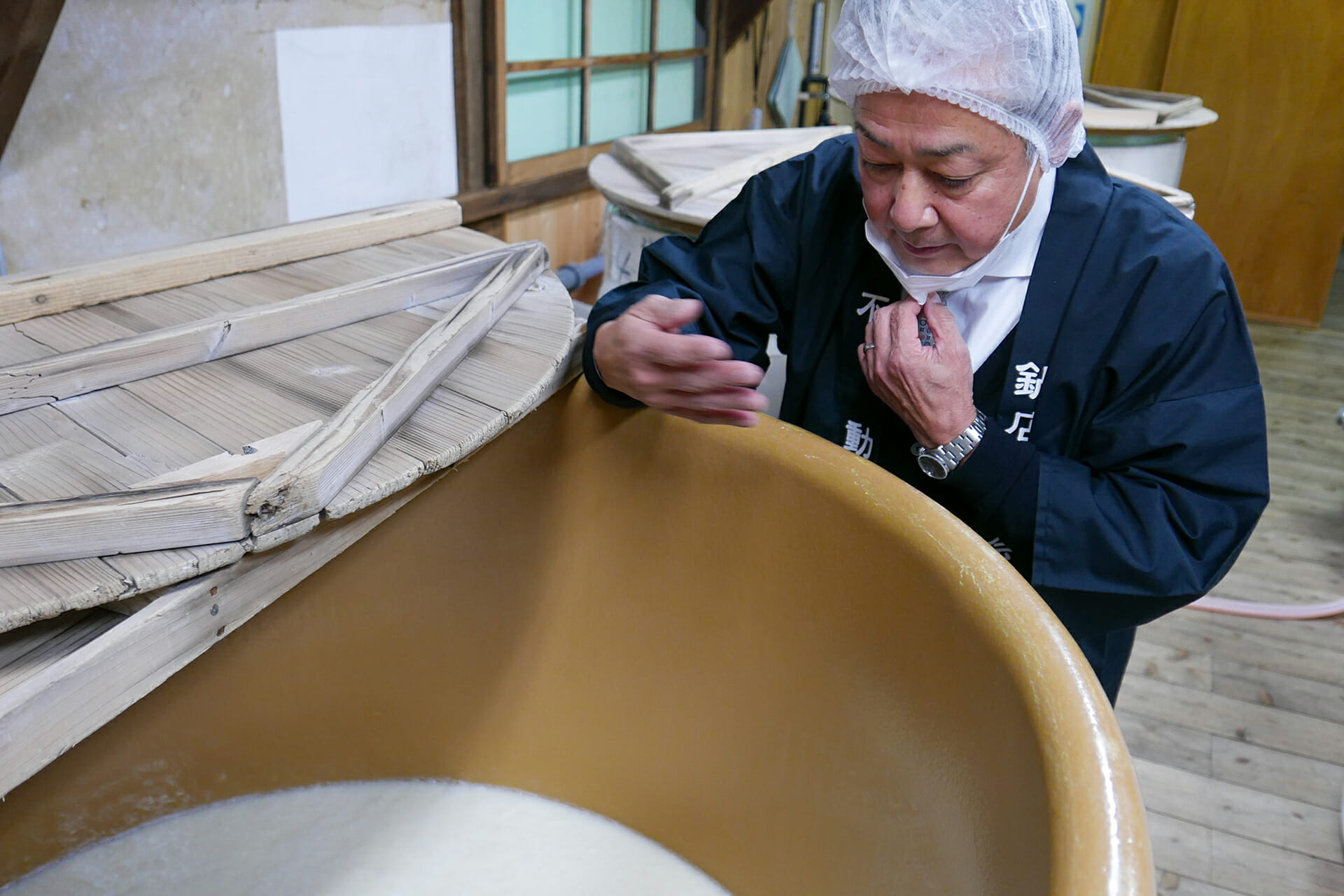 Inside the brewery.
Inside the brewery.
After the tour, it was time for some tasting at their on-site shop. Thanks to all the knowledge we gained today from Mr. Otsuka and Mr. Moriyama, we were able to truly savor the flavors and appreciate the differences of these locally made sake varieties. As we were tasting, we were also taught about how to pair each sake with different foods. To learn more about the brewery tours, or how to buy their sake in the U.S., please see the links directly below this paragraph. Access information for both the Kozaki and Narita shops are listed at the bottom of this page. If you’re looking for an authentic sake experience during your time in Japan, look no further than this airport-area brewery.
Brewery Tour Information:
https://www.nabedana.co.jp/tour.php
Buy online in the United States:
https://www.tippsysake.com/collections/nabedana
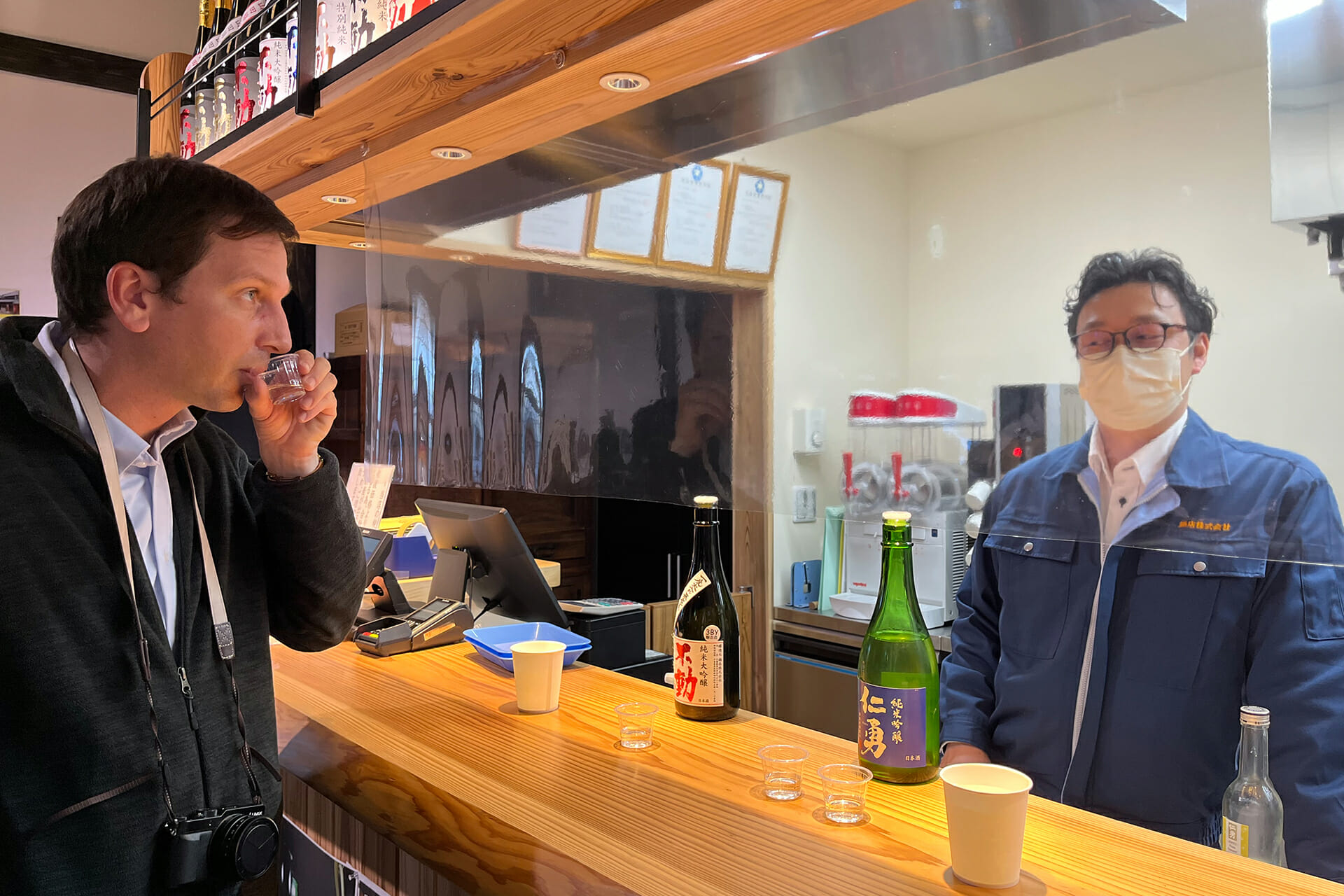 Tasting time, kanpai!
Tasting time, kanpai!
338 Honcho, Narita City
(A 15-minute walk from Narita Station.)
0476-22-2847
1916 Kozakihonshuku, Kozaki, Katori District
(By train: A 15-minute walk from JR Shimosa Kozaki Station.
By car: About 8 minutes from the Kouzaki Interchange on the Ken-O Expressway.)
0478-79-0161